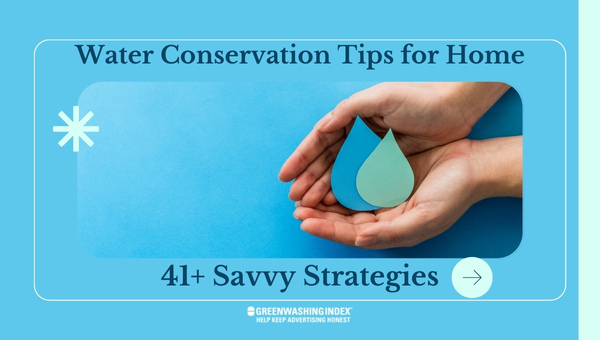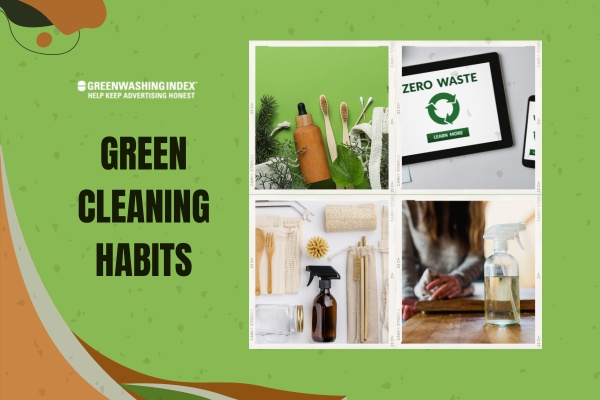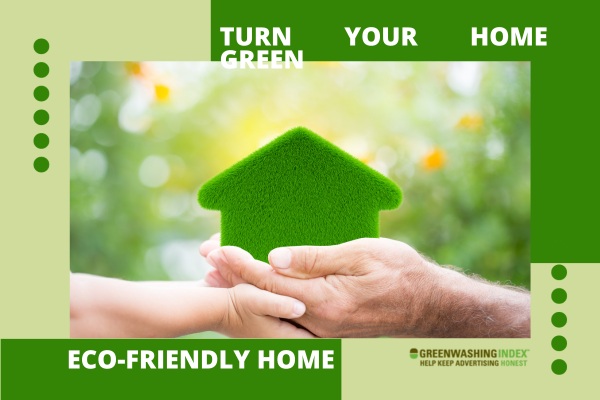Imagine turning on your faucet, and no water comes out – scary, isn’t it? This alarming thought is a daily reality in some parts of the world, and it could become widespread if we don’t act now. Saving water is not just about cutting costs; it’s a vital step to preserve this precious resource for future generations. In this article, I’ll show you that water conservation tips for home are easy to implement and can even be fun.
Looking to cut down your water bill and protect our planet? You’re in the right place! With over 40 straightforward ways to conserve water at home, you can make a huge impact with minimal effort. From smart gardening techniques to efficient appliance use, adopting these eco-friendly practices will drastically reduce your household’s water footprint. Let me guide you through an amazing transformation towards a sustainable lifestyle that benefits both your wallet and our Earth.
What You’ll Learn From Here:
- Effortless Changes: Discover small habits that make big differences.
- Appliance Overhauls: Learn which machines give you the best water savings.
- Garden Gurus Rejoice: Tips for keeping your plants happy with less water.
- Bathroom Breakthroughs: Insights into low-flow fixtures that work wonders.
- Winning The Water Bill Battle: Practical strategies to lower costs effortlessly.
The Value of Conserving Water
Water is like a best friend to us and the earth. We use water every day for so many things, like drinking, cooking, cleaning, and growing our food. But it’s easy to forget that water is not endless. It’s very important to save water so we always have enough and can keep the planet healthy.
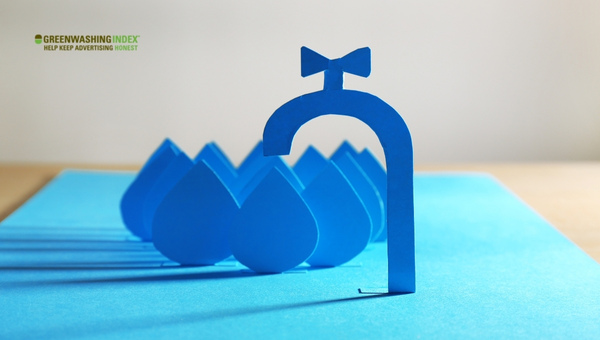
Some people might not think about how much water they use. They might let the tap run too long or take very long showers. When we waste water, it can cause some big problems:
- Less Freshwater: There’s only a little bit of freshwater on earth that we can use. If we waste it, there’s less for everyone.
- Hurt the Environment: Rivers and lakes can get really low when we use too much water – this is bad for fish and plants.
- More Energy Used: It takes energy to clean water and move it to our homes. Wasting water means wasting energy, too.
- Higher Costs: When we use lots of water, it costs more money to treat and pump it around.
So what do I do? I make sure to change these habits! I try hard not to waste so much water every day.
How Conserving Water at Home Contributes to a Sustainable Lifestyle?
When I save water at home, I’m helping in big ways! Here’s how:
- Helps Nature Stay Balanced: Using less means natural places stay healthier.
- Saves Energy: Cleaning less wasted water means using less power – which helps stop pollution.
- Cuts Down Bills: Saving on my monthly cost is great because using less makes my bills smaller!
- Set an Example: My friends see how easy it is when I save on my part – they might start saving too!
By saving even a little bit every day with simple steps in our homes (like turning off taps), all together, you and I can make sure there’s plenty of clean, fresh water now and in future years!
41+ Water Conservation Tips for Home
Saving water is not just good for the earth, but it can also be kind to your wallet. Let’s dive into some easy ways that you and I can use less water at home.
1. Smart Investment in High-Efficiency Washing Machines
When we talk about water conservation tips for home, one of the first things that comes to mind is washing clothes. Did you know that by simply choosing a high-efficiency washing machine, we can save loads of water? These machines are made to use less water per wash, making them both eco-friendly and economical. It’s a smart move if you ask me!
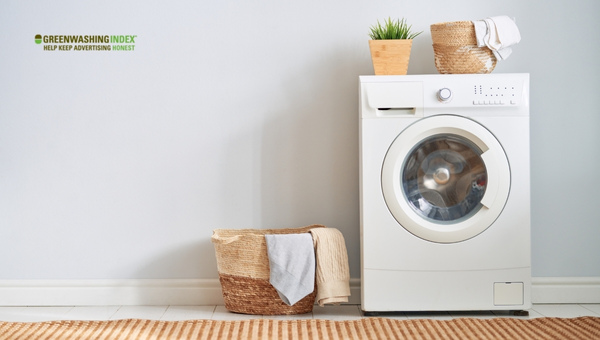
I always try to run my washing machine or dishwasher with full loads. This means waiting until there is enough laundry or dirty dishes instead of running half-filled machines multiple times. It’s amazing how this small habit change makes such a big difference in my monthly water bill! So remember, full loads win when it comes to easy ways to save water at home.
2. Shrinking Toilets Tanks – A Small Change for Bigger Savings
Now let’s chat about toilets – specifically their tanks! Many people don’t realize how much water gets used when we flush. By installing toilets with smaller tanks or putting something like a brick in the tank, the amount of water per flush goes down substantially – great for reducing water consumption at home.
Follow these dead simple yet effective strategies and keep on saving the blue!
3. Harnessing Efficiency with The Adjustable Toilet Flapper
Now, let’s chat about the small things in our toilets that can help save lots of water. I’m talking about that thing called an adjustable toilet flapper. You might wonder what this is. Simply put, it controls how much water leaves the tank when you flush. By adjusting it to let out just what you need, you use less water each time.
To make it work for you, first check if your toilet has one of these flappers. If not, no sweat! You can easily get one from a hardware shop and fit it yourself following the instructions on the package. Once installed, fiddle with its settings until your toilet uses just enough water to do its job right without wasting any.
4. Double The Conservation with a Dual Flush System
Moving on from flappers, there’s this cool thing called a dual flush system for toilets that’s all about choice – and saving water, too! It gives you two flushing options: one for liquid waste and another for solid waste. The liquid waste button uses less water, while the other button uses more when needed.
Putting in a dual flush system could be a simple DIY affair or something you’d want a plumber to handle—either way, once set up, hitting the right button can lessen how much water your household goes through amazingly well.
5. Goodbye Sink Garbage Disposal, Hello Eco-Friendly Alternatives
Finally, say hello to eco-friendly choices and wave goodbye to using your sink garbage disposal too much! Sure, disposals are handy, but they also churn through lots of H2O each time they’re switched on—not ideal for our water conservation goals!
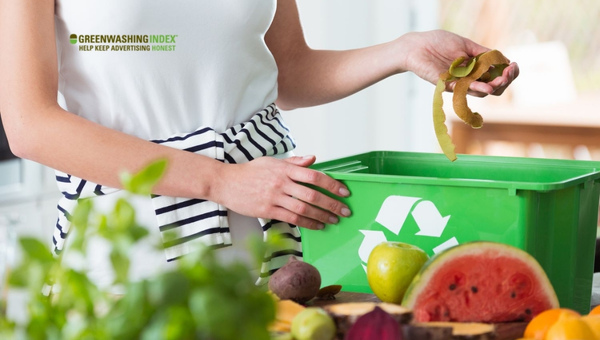
Instead of flipping that switch under the sink after meals, just gather scraps in a bowl as you go, then throw them onto a compost heap or into an indoor composter if outdoor space is tight. This little change not only trims down your home’s demand for precious drops but hooks plants up with some top-notch food of their own once those bits break down back into earthy goodness.
Tiny switches like these matter a lot because every little action adds up at home, creating waves of change in how we view and use our vital resource: Water!
6. Dishwashers – Efficiency Proved Through Comparison
When I think about saving water at my home, I look at my dishwasher. You might not believe it, but using a dishwasher can actually save more water than washing dishes by hand. Here’s the thing: dishwashers are made to use less water. They spray just the right amount to clean dishes well.
I did a test once where I washed the same number of dishes in the sink and then with my dishwasher. The difference was clear – my dishwasher used less water every time.
But not all dishwashers are the same. Some older models might not be very good at saving water. That’s why, for water conservation tips for home, I suggest checking if your machine has an “eco” setting or something similar that uses even less water and energy.
For maximum benefits, make sure to only run your dishwasher when it is full, so you save both on electrical power and reduce water consumption at home.
7. Washing Dishes – Try Only Filling Half the Sink!
Now let’s say you have times when you have to wash dishes by hand. Maybe your dishwasher is broken, or maybe you just have a few items to clean up quickly that don’t need a full wash cycle.
Here’s an easy way to save water: fill up only half of your sink with soapy water instead of letting the faucet run the whole time while scrubbing away. This method uses much less water than if you keep washing each individual dish under a running tap.
And here’s a trick: if your pots and pans are really dirty, soak them in this half-filled sink first, which will help loosen up all that stuck-on food before you start scrubbing – it makes them easier to clean, too!
By adopting this simple habit consistently as part of our sustainable water practices for home use, we can make quite a bit of difference in how much water we use every day.
8. Bottling Up Your Drinking Water – Lesser Spills, More Savings
Another one from my eco-friendly home water conservation strategies bucket list is about drinking very carefully– no jokes here! Often, when we pour ourselves a drink straight from the tap, there’s spillage over our cup onto counters or floors, which leads to wastage without us even realizing it sometimes.
To tackle this tiny troublemaker situation, here’s what I do: Keep bottles or jugs filled with drinking water readily available inside my refrigerator. This approach prevents those little spills because pouring from a bottle into glasses is usually a much cleaner and more controlled process than tapping directly into a glass or mug standing over the sink.
Plus side benefit? The act also encourages everyone in the family house, including myself, to drink more necessary H2O since the cool, chilled, refreshing liquid is always waiting within reach, ready to go whenever any kind of thirsty feeling comes on around the clock!
So there they are — three simple actions anyone could take towards a better, healthy world through wiser use of important life resources right out everyday space call households kitchens, living regions mine, yours anyone else joined the same shared green Earth, friendly cause indeed!
9. Switch On Efficiency with Apt Outdoor Faucetting Systems
When I think about how to save water outside my home, efficient taps make a big difference. An outdoor faucet that leaks or drips can waste gallons of water without me even noticing. So, I make sure all my outdoor taps are in good shape and don’t leak.
Another smart move is to install a tap with an automatic shutoff valve. This means that when I’m done using the water and forget to turn it off, it shuts itself off automatically! Pretty neat, right? By keeping my taps outside in top shape, I know I’m doing my bit for water conservation at home.
10. Laying Out A Practical Template For Resilient Gardens
I love my garden! But did you know that gardens can use up a lot of water? That’s why I’ve thought about ways to have a beautiful garden and save water at the same time. First off, choosing plants that don’t need much water is key – these are often called drought-resistant plants.
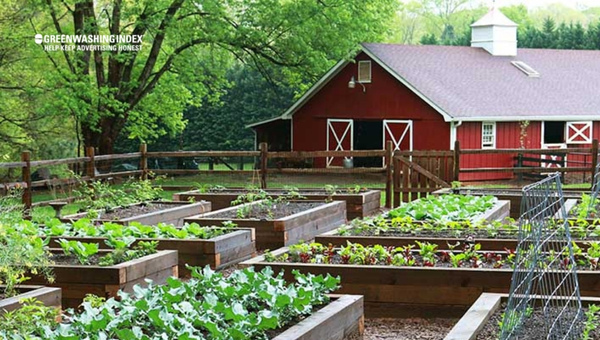
They’re tough and can handle dry spells well. Also, how I arrange the plants matters; those that need more shade go under trees, which keeps them cool and reduces their thirst!
Moreover, mulching is super helpful — adding a layer of wood chips or straw on top of the soil helps retain moisture so the ground doesn’t dry out too fast after watering or rain. Creating a garden plan with these eco-friendly home water conservation strategies has helped me cut down on how much water I use outdoors.
11. Navigating through the Grey – Understanding Grey Water Systems
Now, let’s talk about something called “greywater.” Greywater is gently used water from sinks, showers, washing machines — pretty much anywhere except toilets because toilet water isn’t suitable for reuse due to contamination risk (that’s called blackwater). With proper care, greywater can be reused for things like watering plants or even flushing toilets.
To include this kind of recycling at my place as one of many sustainable water practices for home, first things first: you need to see if your local regulations allow it and then set up greywater systems according to safety guidelines. The systems filter out bits from this used water, making it OK for certain uses again, like irrigation, which means your garden gets enough moisture without wasting fresh, clean stuff meant for drinking!
So there you have it – being smart with faucets outdoors ensures no precious drops escape unnoticed; crafting a resilient garden lays down roots for less dependence on constant watering; whereas embracing grey systems turns waste into worth by giving gently used H2O another round in our daily cycle—three solid steps toward reducing our homes’ splash footprint!
12. Shower Shorter, Save More: Time Yourself
When I talk about water conservation tips for home, one easy thing comes to mind: taking shorter showers. It sounds simple, but it really helps save a lot of water. I like to use a timer to remind me when it’s time to finish up. Sometimes, I even play a game with myself to see if I can end the shower before my favorite song ends!
13. Water Saving Shower Head: An Ounce of Conservation Equals a Pound in Your Pocket
Another smart thing I do is use a water-saving shower head. This special kind of shower head uses less water than normal ones without cutting down on the pressure we need for a good, clean feel. It’s an easy way to save water at home and believe me, it adds up! Over time, not only am I helping the planet by using less water, but my wallet is happier, too, because my bills go down.
14. Aerators: Making Your Faucets Work Better For Less
Now let’s talk about something else that’s brilliant for sustainable water practices for home – faucet aerators! These tiny devices fit onto the bottom of your faucets and mix air into the stream of water that comes out.
That means you use less but still get all the splash and rinse you need – neat, right? They’re simple to attach and can make such a big difference in reducing how much water we use every day while washing hands or dishes.
15. Mindfulness in Motion – Turning off Taps when Not in Use
When I think about water conservation tips for home, I always remember the simple action of turning off the tap. It’s easy to leave the water running while we are brushing our teeth or washing our hands. But by turning the tap off when we don’t need water right at that moment, we can save a lot of it.
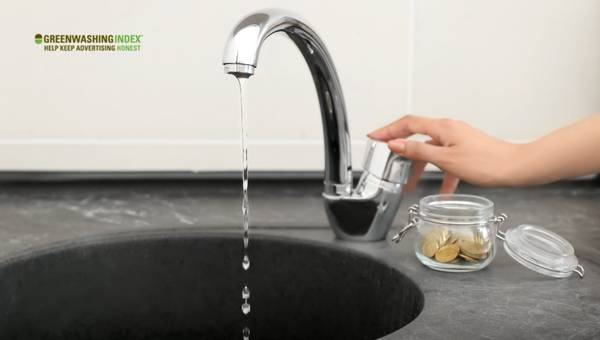
So, I try to be mindful. This means every time I use a tap, I ask myself: “Do I need this water running?” If not, I flip it off quickly. Just by doing this small step, you’re already on your way to reduce water consumption at home.
16. Cutting out the Leaks – Regular Checks Keeping Wastage at Bay
Leaky faucets and pipes are sneaky culprits that wastewater in our homes without us even knowing. Sometimes, these leaks are so slow that they barely make a sound but over time they add up and lots of water is wasted.
My tip? Take a walk through your house and give every faucet and pipe a good look-over from time to time. Listen for drips and watch for wet spots where there shouldn’t be any. Fixing leaks promptly is one of those eco-friendly home water conservation strategies that not only conserves water but can also save you money on your bill.
17. The Frozen Dilemma – Thawing Food Without Flooding Your Kitchen
Many times we thaw frozen food under running tap water because it’s quick but this method could mean gallons of unnecessary waste! Instead of letting all that water slip down the drain while defrosting food items, plan ahead.
If you know what you want to cook tomorrow night, take it out of the freezer and put it in the fridge beforehand; give it time to thaw safely without any extra water required. This approach requires some thinking ahead but greatly aligns with sustainable water practices for the home while keeping your kitchen dry
18. Your Pots Have Rights Too – Cooking with Optimal Sizes
Saving water starts in the kitchen for me, and I always keep in mind that using the right size pots can help a lot. Here’s what I do: If I’m cooking small meals, I pick a small pot. For bigger meals, a larger pot makes sense. It’s that simple.
Why does this matter? Well, smaller pots need less water to cook food which means less water is wasted. Plus, it saves energy since heating a smaller amount of water takes less time and power.
So next time you’re about to boil some potatoes or cook pasta, just think: “Am I using the right pot size?” It’s an easy way to save both water and energy at home.
19. Weather Wise Watering – Timing your Sprinklers Right
I love keeping my garden green but don’t want to waste any drop of precious water while doing it. That’s why I got smart with my sprinkler timing—it’s one of the best water conservation tips for home gardens.
Here’s what works for me:
- Only turn on sprinklers early morning or late evening when it’s cooler.
- Use weather forecasts to plan when my lawn needs watering.
- Skip watering if rain is coming soon.
Timing your sprinklers this way means they don’t work as hard during hot hours when lots of water would just evaporate away into thin air instead of going into the ground where plants can drink it up.
20. Effective Irrigation Begins with Aeration
When soil is compacted, it’s like a tight sponge that can’t soak up much water—and that means wastage whenever you try watering your garden! What do I do? I aerate my lawn each year by making little holes in the soil so air and water can get inside easily.
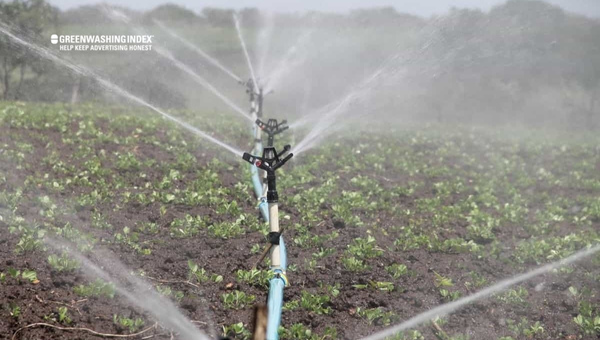
Aerating helps roots grow deep and strong because more room makes it easier for roots to spread out looking for nutrients and moisture down below ground level where there’s lots more than just on the surface. It also means less watering overall since your plants will be happier with whatever they get naturally from rain or scheduled irrigations.
Following these steps has helped me use less water while still enjoying all my home activities – saving money and helping our planet too!
21. Selective Shade – Substantially Reduce Evaporation
One easy way to save water is by putting plants in the right places around your home. When it’s hot outside, water from pools or gardens can turn into vapor and disappear into the air. To stop this, you can use trees or shade to cover these areas during the hottest parts of the day. By doing this, you can keep more water from drying up.
22. An Immediate Solution: The Perks of Instant Water Heaters
Have you ever waited for the shower to get warm and thought about all that cold water going down the drain? This is where instant water heaters come in handy! These heaters warm up your water quickly – so there’s less waiting and less wasted water. You get a hot shower faster and save on your water bill too!
23. Stop the Drip: Seal The Deal With Leaky Faucets Repairs
Is there a faucet at home that goes drip-drip? Even a small leak can waste lots of water over time. Fixing leaky faucets is one of those easy ways to save water at home without much trouble. It’s usually as simple as changing a washer or tightening up a screw! Don’t let those drips empty your wallet – seal them up instead!
Water conservation is something I care a lot about, especially when it comes to doing it at home. If you’re like me and want to be kinder to the Earth, here are some water-saving tips that can really make a difference.
24. Quit the Thaw Habit: Alternatives to Using Running Water for Frozen Foods
Ever put frozen food under running water to thaw it out? I used to do that too, until I learned how much water it wastes. Now, I plan ahead! Moving your frozen foods from the freezer to the fridge well in advance is a great way to save water. Or if you forget (because we all do sometimes), just leave your food on the counter for a little while before you cook – no water is needed!
25. Efficiency Sprouts with a Rain Barrel – Harvest Rainwater, Reduce Usage
One super smart way of cutting back on how much water we use is catching rainwater in barrels. Here’s how it works: You set up this barrel outside, rain pours down, fills it up, and voila! You’ve got free water for things like watering plants or washing your car – basically, anything where you don’t need clean drinking water. It’s an old idea but believe me, using rain barrels can really help reduce our demand on tap water.
26. Sophisticated Simplicity – Measuring Soil Moisture
Another head-scratcher might be knowing when our garden actually needs watering which avoids unnecessary splashing around with hosepipes or sprinklers when they’re not needed! The solution? Use simple tools that measure soil moisture so we only give our plants what they need when they need it.
In summary: ahead-of-time thawing saves lots of H2O; collecting rain in barrels is both crafty and wise; and checking soil moisture before watering plants means never wasting a drop! These are more than just ‘tips’ – they’re easy ways anyone can become more eco-friendly without trying too hard at all.
27. Green and Gravelly Go together – Mulch or Gravels for Less Evaporation
You might not think much about the ground in your garden, but it plays a big role in water use. When I use mulch or gravel around my plants, it does wonders. These materials cover the soil, keeping the sun off and helping the ground stay cool.
This means less water vanishes into the air. Imagine putting a lid on a pot of water—the water doesn’t escape as steam. That’s pretty much what’s happening here with mulch and gravel—they’re like little lids for your soil!
28. Home Car Wash vs Professional Car Wash – Where lies the water savings?
Now, washing my car at home seems like a good idea to save some money, but here is something interesting: professional car washes often use less water than we would at home with our hose. Plus, they recycle their water!
Next time you think about washing your car at home to conserve water, remember that going to a professional car wash might actually be better both for your wallet and our planet.
29. Bathing Pets on Your Lawn – Double Duty, Single Usage
My dog loves playing outside and getting dirty; yours probably does too! But when bath time comes around, doing it on my lawn is like hitting two birds with one stone—I get a clean pet and a watered lawn in one go! The trick is to use pet-friendly soap so it doesn’t harm my grass or furry friend. Just make sure you don’t use too much soap; we’re saving water after all.
By trying out these water conservation tips for home, like using mulch and gravels in gardens, picking professional car washes over home ones, and bathing pets on the lawn (carefully), every drop of precious H2O can be used wisely. It’s all about those small changes that add up to make a big difference!
30. Curate Your Cooling Canopy with Strategically Planted Trees
When I think about water conservation tips for home, planting trees smartly stands out to me. Trees are nature’s own umbrella for your house. They give shade, which makes your place cooler. This means you don’t have to use air conditioning as much, and that saves water because power plants need lots of water.
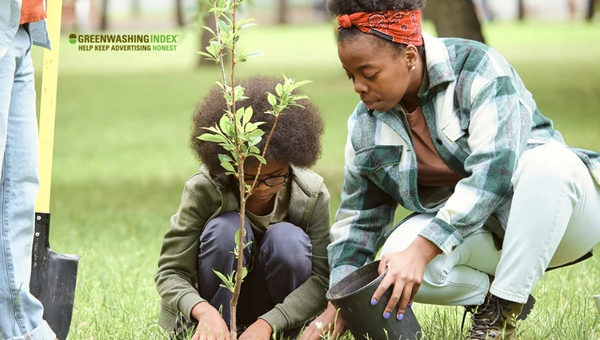
Here’s what I do: I look around my yard to find the best spot where a tree would block the sun when it’s strongest. Usually, this is on the west side of my home where the afternoon sun is hot. By doing this, my home stays cool with less work from air conditioners and fans.
31. Channelize Nature’s Bounty- Group Plants Based on Their Water Needs
Now here is a clever trick – grouping plants by how much water they want! Think of them like friends who all enjoy eating the same amount at a meal – they are happy together!
When you group plants based on their thirst levels, you can just water each area according to what those specific plants need. No wasting water on plants that don’t need it too much! It’s an easy way to save water at home without making your green friends thirsty.
I stick low-water buddies in one spot and those that are more like water-guzzlers in another. By doing so, I follow one of the useful and very easy-to-do eco-friendly home water conservation strategies without even trying too hard.
32. Put that Shovel to work – Mulching and Gravel Spreading
I love using mulch in my garden; it’s like a cozy blanket for soil! It keeps moisture locked in so I don’t have to keep reaching for the hose all day long.
Grab some mulch or gravel next time you’re out gardening & just spread it all over your soil – not too thick but enough to cover it up well. What happens then? Well, less evaporation means moister soil which spells out less watering needed!
This idea isn’t just smart but follows suit with sustainable practices we should be adopting at our homes today—big wins for both our wallets and Mama Earth!
33. Life-Proof Your Outdoor Faucets Against Freezing
Winter comes with a chill that can freeze water in pipes. To stop this, I need to make sure my outdoor faucets don’t freeze. When they do, they might break and wastewater when it melts. Here’s what I do: I take off hoses from the faucet before it gets cold. Then, I get a faucet cover at the store and put it on. This keeps the tap warm enough.
34. Keys to Car Washing Without the Hefty Water Bill
I love keeping my car clean but don’t love a big water bill. So, what can I do? First, instead of using a hose that won’t stop running water, I use a bucket with soapy water. Then, I dip my sponge in the bucket to wash my car section by section – saving lots of water! Lastly, to rinse my ride, I use another bucket with clean water or a spray nozzle that stops when I’m not pressing it.
35. Furry Friends and Lawns: The Happy Coexistence with Water Savings
Taking care of pets and having green lawns are both nice but can use water if not done right. How do we save here? For our furry friends’ baths, let’s turn off the tap while scrubbing them down – then turn it back on only for rinsing! And for lawns where pets play often – choosing grass types that need less watering helps more than we think because they stay green with way less water.
Using these simple steps helps me keep using less and less water around my home every day; keeping both money in my pocket and our planet happier with lower waste – that’s smart living for you!
36. Lawn Length Leveraging: The Ideal Height for Conservation
When I take care of my lawn, I follow a simple water conservation tip for home – I keep my grass a bit taller. You may wonder, why does the height of my lawn matter? Well, when grass is too short, it needs more water to stay green. If it’s longer, the soil holds moisture better and doesn’t dry out fast.
So how tall should you keep your grass? Most lawns do well with grass about 2 1/2 to 3 inches tall. Keeping to this height, not only saves water because your lawn requires less watering, but it also becomes healthier and looks better.
37. Biodegradable Blankets – Benefits of Not Removing Lawn Cuttings
Let me share an easy way to save water at home that also cuts down on yard work – leave the cuttings on the lawn after mowing! It might seem neater to remove them, but those clippings act like a natural blanket for your soil.
This blanket helps by keeping moisture in and reducing how much water evaporates from your soil. This means you’ll need less watering for your lawn over time. Also important is that these cuttings break down quickly and naturally feed your grass with nutrients.
38. A Breath of Fresh Air – The Little-known Benefits of Aeration
Another sustainable practice for home lawns is aeration. This means making small holes in the soil so air can get into it easier. But what does that have to do with saving water? It’s all about helping roots grow deeper into the ground where they can find their own sources of moisture more easily.
Aerating can be as simple as walking around with shoes that have spikes on them or using a special tool designed for this job. When done regularly, aerating can greatly improve how well your yard uses water and makes for stronger plants that are better at conserving moisture themselves.
39. Widespread Use of Rain Barrels: A How-To Guide
One of my go-to water conservation tips for home involves using rain barrels. What’s a rain barrel? Well, it’s simply a big container you use to catch and store rainwater from your roof. Why do this? It’s because this water can be used later for things like watering plants or cleaning.
Here is what you need to do:
- First, get a barrel. You can buy one or use something you already have at home.
- Put it under a downspout from your roof so that when it rains, the water goes into the barrel.
- Make sure there is a lid or cover on top to keep bugs and dirt out.
And that’s pretty much it! When you need water for your garden or lawn, use what you collected in your rain barrel instead of turning on the tap. It’s smart and doesn’t cost much.
40. Smart and Simple Irrigation: The Art of Effective Sprinkler Timing
Smart irrigation is another one of the easy ways to save water at home. If you have sprinklers in your yard, timing them right can save a lot of water.
Here are simple steps:
- Water early in the morning or late in the evening when it’s cooler outside because less water will evaporate.
- Don’t just set your sprinklers on full blast; see how low they can go while still getting enough water to your plants.
- If it rained recently, skip watering for that day – Mother Nature has done the job for you!
Being smart with sprinkler timing means not only reducing your water consumption at home but also helping out our planet by using less resources.
41. Embracing the Drought-Resistant Garden Trend
Last but not least, let’s talk about eco-friendly home water conservation strategies like having a drought-resistant garden. These gardens don’t need as much watering because they’re full of plants that are tough and can handle dry conditions.
To make one:
- Choose plants native to your area since they’re used to its weather.
- Look for plants labeled “drought-resistant” or “low-water.”
- Arrange these plants in sunny spots where they’ll thrive without needing extra watering.
By embracing this garden trend, we’re practicing sustainable water practices for our homes and helping our green friends adapt better too!
By following all these steps – from catching rainwater with barrels to smart watering and picking tough plants – we each play an important part in saving Earth’s precious resource: water! Let’s drink (responsibly) to that!
FAQs
How much water does a high-efficiency washing machine save?
A high-efficiency washing machine can save about 50% of the water you’d normally use with a standard washer.
What is greywater and how can it be used?
Greywater is gently used water from sinks, showers, and washing machines. It can be reused for things like watering plants or flushing toilets.
Are faucet aerators worth it?
Yes, faucet aerators are cost-effective as they reduce water flow, saving both water and money without cutting pressure.
Why is using rain barrels beneficial?
Rain barrels collect rainwater that you can use for your garden, which cuts down on your need to use tap water for outdoor watering.
Conclusion
After diving into the numerous ways to conserve water at home, it’s clear that small changes can lead to substantial savings. From updating bathroom fixtures like toilets and showerheads to being mindful of our daily habits, each step contributes towards a sustainable lifestyle.
Embracing eco-friendly practices doesn’t just save water; it also trims down our utility bills and fosters an environment-friendly consciousness in our households. By adopting these easy water conservation tips for home use, we join the global effort to preserve this precious resource for future generations.

